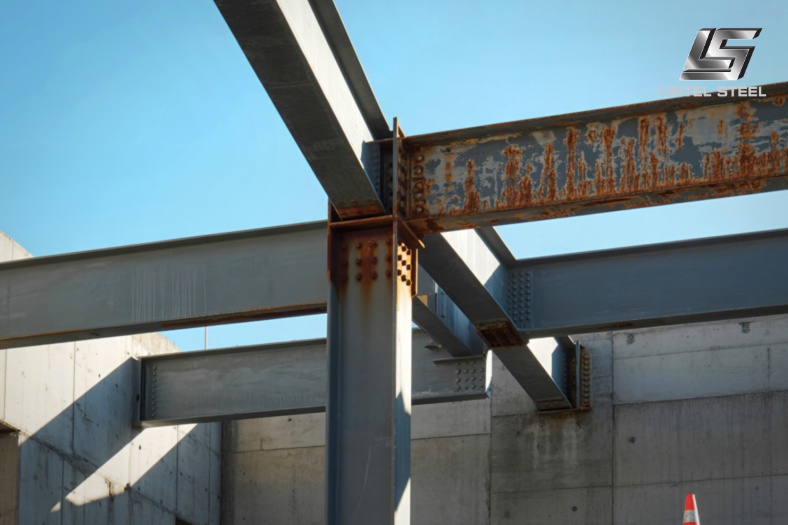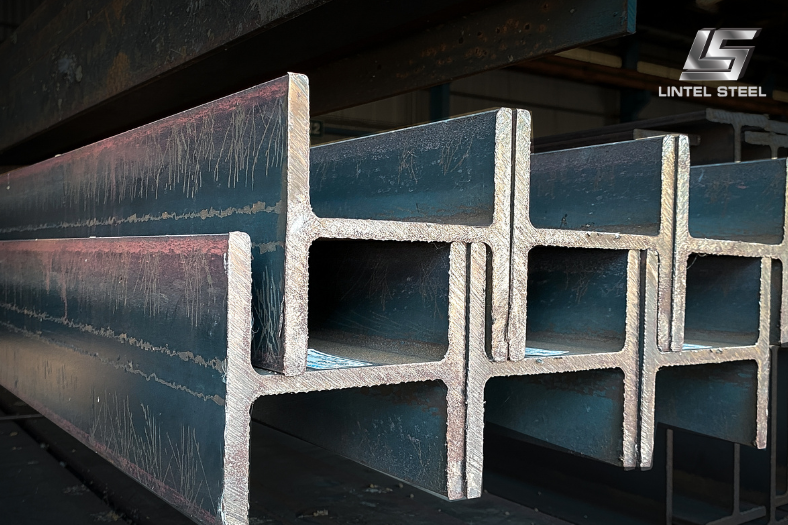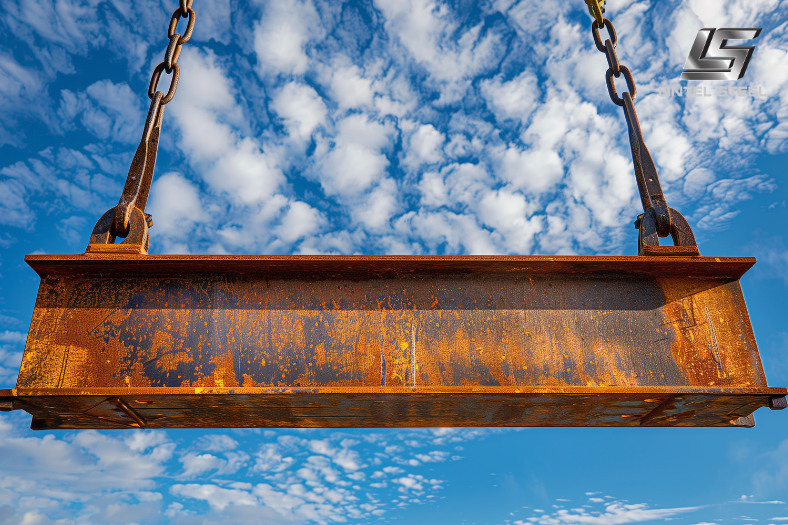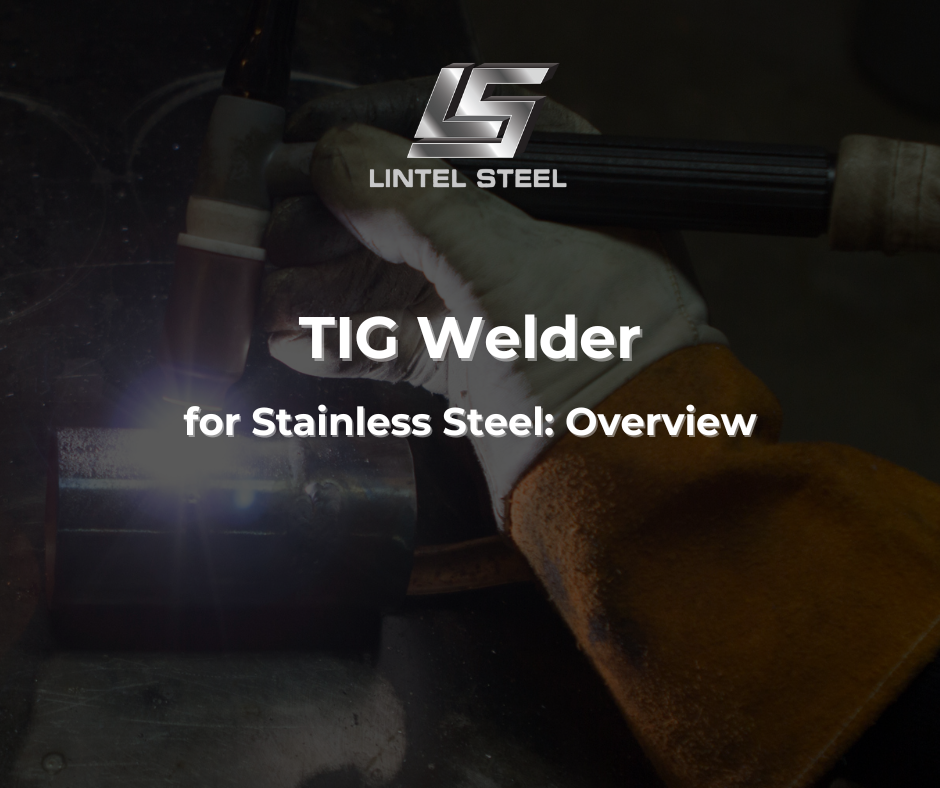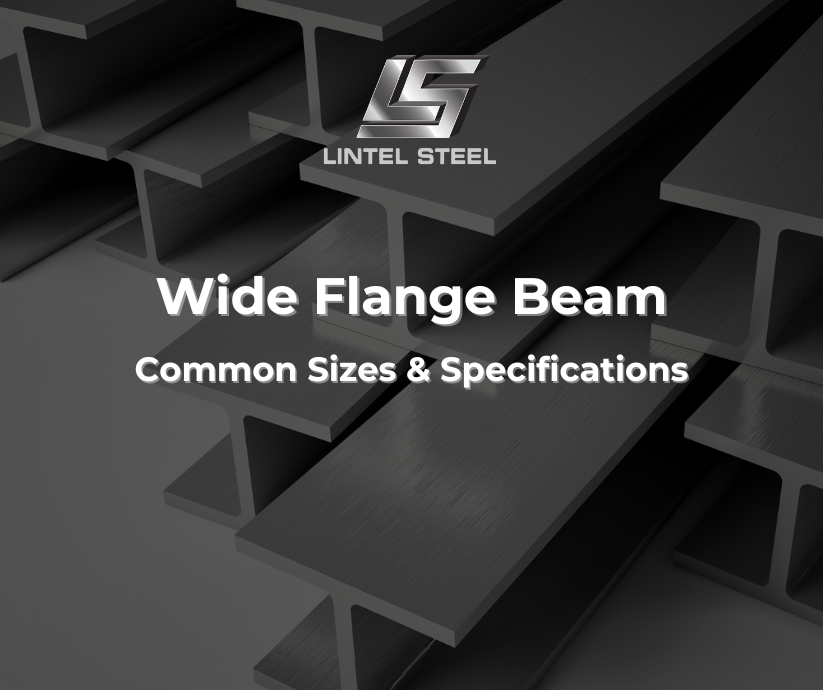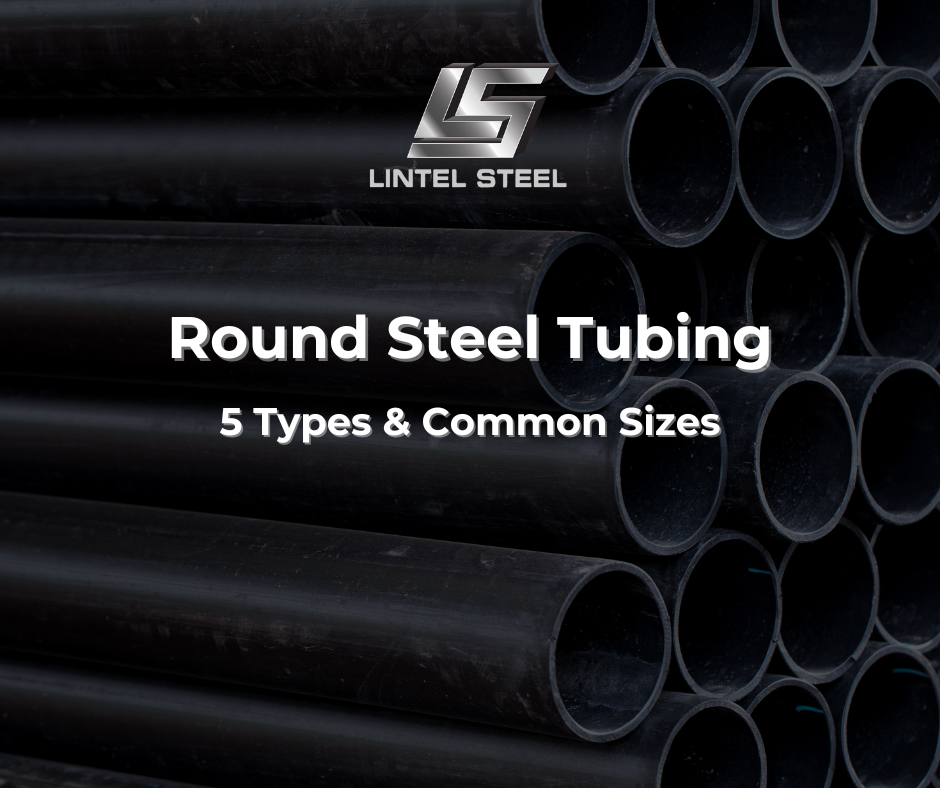Steel Beam: 5 Common Types & Sizes
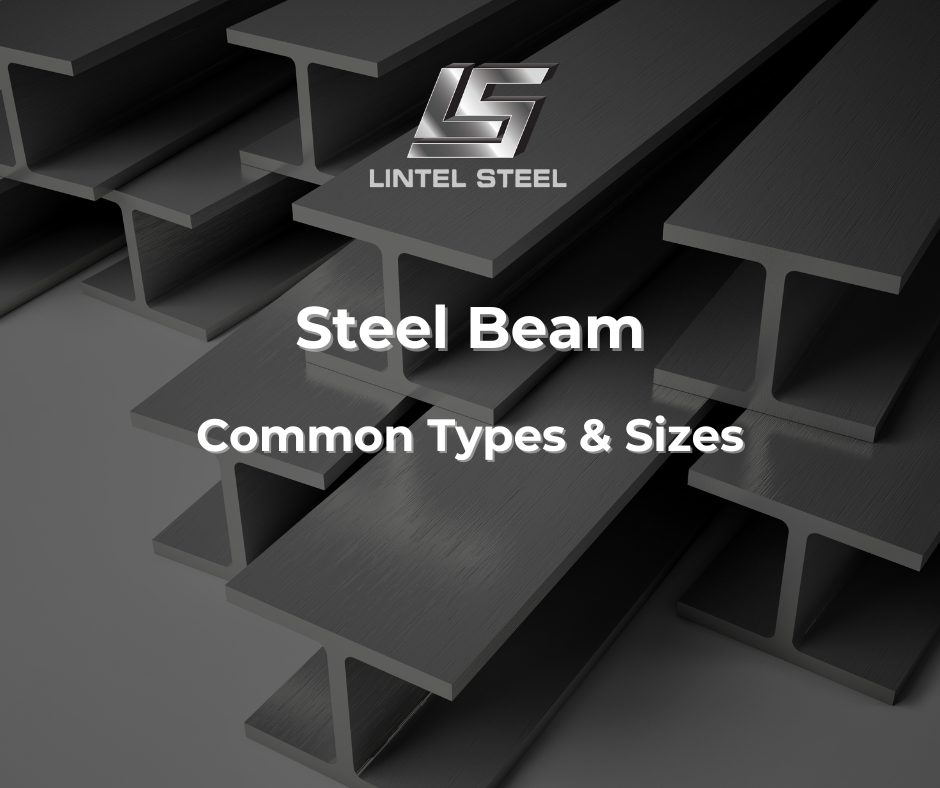
Steel Beam – the backbones of any building construction are what allow architects and builders to design spaces that feel open, strong, and safe. Unlike timber or other materials, steel beams bring together sheer strength, durability, and design flexibility in ways that shape the skylines around us. Whether you’re a builder planning your next project, a fabricator looking for reliable supply, or a homeowner curious about what keeps your home standing strong, understanding steel beams—their sizes, uses, and advantages—will give you a clearer picture of why they remain the top choice in construction.
What is a Steel Beam?
A steel beam is one of the most fundamental structural components used in modern construction. It is a long, straight piece of steel designed to bear loads by resisting bending. Steel beams are engineered to carry heavy weight, support frameworks, and distribute forces evenly across a structure. Because of their strength and durability, they are essential in residential buildings, commercial complexes, bridges, warehouses, and industrial plants.
There are many types of steel beams, including I-beams, H-beams, universal beams, and channel beams. Each type is suited for different load requirements and construction needs, but all share the same purpose: providing strong and stable support.
Why Builders Use Steel Beams
Builders and fabricators rely on steel beams because they provide an unmatched combination of strength, efficiency, and long-term performance. Unlike timber or concrete, which can warp, crack, or degrade under stress, a steel beam delivers consistent performance even in demanding conditions. Here are some practical reasons why they are the backbone of modern construction:
High Load Capacity for Heavy Structures
Steel beams are engineered to carry enormous weight without bending or collapsing. In practical terms, this means they are used to support multi-storey buildings, bridges, mezzanine floors, and warehouses. For example, in residential projects, a single universal beam can support an entire second-storey addition without the need for multiple supporting columns.
Durability Against Environmental Stress
Timber beams can rot in damp environments, while concrete may crack under temperature changes. A properly treated steel beam resists corrosion, pests, fire, and weather fluctuations. In coastal cities like Perth, where humidity and salt can be a problem, galvanised or painted beams ensure long service life with minimal maintenance.
Versatility Across Different Projects
Steel beams come in various profiles—I-beams, H-beams, channels, and hollow beams—making them adaptable for different load scenarios. For example, an H-beam might be chosen for a warehouse due to its wide flanges and superior strength, while a box beam is perfect for applications that need both lightness and torsional strength, such as crane systems or roof trusses.
Faster and More Efficient Construction
Because steel beams can be prefabricated to exact lengths and specifications, they reduce cutting, shaping, and waste on-site. This is particularly useful for modular buildings and prefabricated homes, where time and precision are critical. A pre-cut beam can arrive ready for installation, speeding up the project schedule by days or even weeks.
Longevity and Cost-Effectiveness Over Time
While steel beams may cost more upfront compared to timber, they are more cost-effective in the long run. They rarely need replacement, require minimal maintenance, and add long-term value to a property. In commercial projects, this reliability means fewer repairs and less downtime, which translates directly into financial savings.
Compliance with Building Standards
Australian building codes require structural materials that meet AS/NZS steel standards. Choosing steel beams not only ensures compliance but also provides peace of mind that the structure can withstand both everyday loads and extreme events like storms or seismic activity.
In short, steel beams are the go-to choice for builders who need safety, speed, and durability. From a small residential renovation to a massive infrastructure project, they provide a foundation that is strong, reliable, and adaptable.
Common Types of Steel Beams
Steel beams are manufactured in various profiles, each with unique properties:
- I-Beam (Universal Beam) – Named for its “I” shape, this is one of the most widely used beams for building frames and bridges.
- H-Beam – A heavier and wider version of the I-beam, offering greater load-bearing strength.
- Channel Beam (C-Section) – Shaped like a “C,” used in lighter frameworks and structural support.
- T-Beam – Similar to an I-beam but without a flange on one side, often used in specialized construction.
- Box Beam (or Hollow Beam) – Rectangular or square hollow steel sections that provide torsional strength and are lighter than solid beams.
Steel Beam Sizes
Steel beams are manufactured in a variety of sizes and weights to suit different building requirements, from small residential renovations to large-scale commercial and industrial projects. In Australia, the most commonly used are Universal Beams (UB), sometimes referred to as “I-beams.” These beams are classified by both their depth (height of the section) and their weight per metre.
Here are some common examples and their practical applications:
UB 150 x 14 kg/m: Compact and lightweight, ideal for residential framing, lintels over windows and doors, or small extensions where structural demands are moderate.
UB 200 x 18 kg/m: A step up in strength, often chosen for medium-duty supports such as small mezzanine floors, garages, or sheds.
UB 250 x 25 kg/m: A highly popular choice in home construction. These beams can span greater distances and are strong enough for supporting floor joists or roof structures.
UB 310 x 32 kg/m: Suitable for heavier residential and light commercial applications, such as larger open-plan living areas, small warehouses, or industrial mezzanines.
UB 360 x 44 kg/m: Often used where greater spans are required without intermediate columns, such as in large retail stores or community halls.
UB 410 x 54 kg/m: A heavy-duty option used in industrial facilities, bridges, and large-scale infrastructure. These beams are designed to carry extreme loads across long spans.
UB 530 x 92 kg/m and larger: Designed for massive infrastructure projects such as stadiums, transport hubs, and multi-storey high-rise buildings, where structural strength is critical.
It’s important to remember that the right beam size is never chosen by guesswork. Engineers determine the correct section based on:
- The span length (distance between supports).
- The type of load (static, dynamic, point loads, or distributed loads).
- The intended use of the building (residential vs. commercial vs. industrial).
- Building codes and safety requirements under AS/NZS standards.
By selecting the correct steel beam size, builders ensure both safety and efficiency while avoiding over-engineering (which adds unnecessary cost) or under-engineering (which compromises safety).
Steel Beam vs. Timber Beam
One of the most frequent comparisons in construction is between steel beams and timber beams, as both materials are commonly available and have distinct advantages depending on the project.
1. Strength and Load Capacity
Steel beams can handle much greater loads compared to timber beams of the same dimensions. This makes them indispensable in multi-storey buildings, wide-span roofs, and structures that require minimal internal supports.
Timber beams, while sufficient for small residential builds, cannot match the structural strength of steel. They are more suited for lightweight applications like pergolas, decks, or small residential framing.
2. Span Capabilities
A steel beam can span much longer distances without bending or requiring intermediate columns. This is especially valuable for open-plan layouts, warehouses, or modern homes where fewer walls and supports are desired.
A timber beam typically requires additional support for long spans, which can increase construction costs and limit design flexibility.
3. Durability and Resistance
Steel beams are resistant to termites, rot, and warping. They also perform better under fire conditions when appropriately treated and coated. In coastal cities like Perth, galvanised or painted steel beams provide long-term corrosion resistance.
Timber beams can degrade over time due to moisture, insect infestation, and temperature changes, requiring regular maintenance and sometimes replacement.
4. Cost Considerations
Timber beams are usually cheaper upfront and easier to work with on-site, making them attractive for smaller, budget-conscious projects.
Steel beams may have a higher initial cost but offer long-term savings thanks to reduced maintenance, longevity, and the ability to span greater distances with fewer materials.
5. Sustainability
Steel is highly recyclable and can be reused without losing its properties, aligning with modern sustainability goals.
Timber is renewable when sourced responsibly, but large-scale logging raises environmental concerns in some regions.
Practical Conclusion
For small-scale residential builds or decorative structures, timber beams can be a cost-effective and workable choice. But when strength, durability, and longevity are priorities—especially in large residential, commercial, or industrial projects—steel beams are the clear winner.
How to Choose the Right Steel Beam
Selecting the correct steel beam is essential for ensuring safety and cost efficiency. Consider the following:
- Load requirements – Determine how much weight the beam must carry.
- Span length – The longer the beam, the stronger and deeper it needs to be.
- Beam type – Choose between I-beam, H-beam, channel, or box section depending on your project.
- Surface finish – Galvanised beams are ideal for outdoor projects, while painted beams may suffice indoors.
- Compliance – Always ensure beams meet Australian Standards (AS/NZS).
Consulting with a structural engineer is recommended for projects that require precise load calculations.
Where to Buy Steel Beams in Perth
If you’re based in Perth, you can source steel beams from local suppliers who stock a wide range of sizes and profiles. Many suppliers offer custom cutting, drilling, and fabrication services to ensure beams fit your project specifications. Choosing a local supplier also means faster delivery times, compliance with Australian Standards, and expert guidance on selection.
A steel beam is one of the most reliable and versatile structural materials available today. With a wide variety of shapes, sizes, and load-bearing capacities, it plays a critical role in modern construction and fabrication. Whether you’re building a small residential extension or a large-scale industrial project, choosing the right steel beam ensures your structure will stand strong for decades.
You can find out more about us at our Fanpage Lintel Steel.

